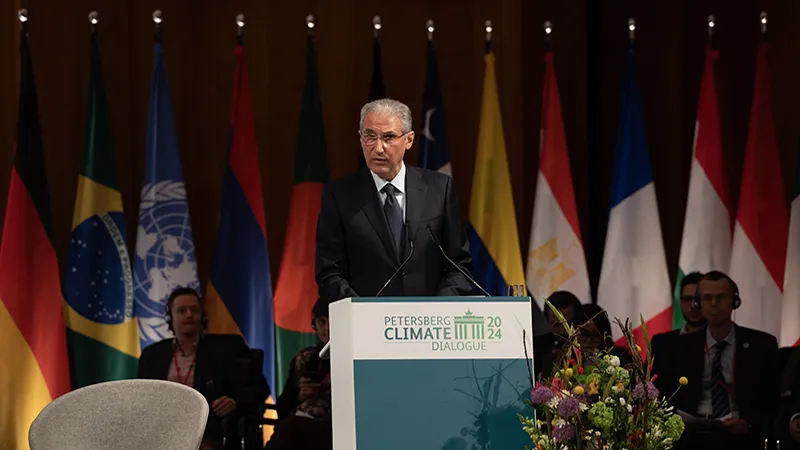A wildlife network has launched to bring together indigenous and scientific knowledge to work with the financial sector to develop tools to support resilient landscapes.
The Wildfire-Resilient Landscapes Network was launched at a reception attended by His Majesty King Charles III (pictured), on 30 November ahead of the start of COP28, in Dubai.
Part of its aim is to work with the finance industry to develop innovative financial tools, for example around emerging nature markets, to generate investment to support the transition to resilient landscapes.
It will also develop ‘living labs’, to demonstrate how to create resilient landscapes to deal with the increasing problem of wildfires in fire-prone areas of the world.
The founding of the network was inspired by The King’s interest in linking Australia’s indigenous fire experts with Canadian experts to share best practices following Canada’s horrific fire season.
Currently, the costs related to wildfire prevention and landscape management comes from public subsidies, which is insufficient to deal with the scale of the problem faced globally.
Private-public partnerships and private finance are “crucial”, according to the initiative, to scale up investments, harness new technologies, and create a new model for designing resistant and resilient landscapes.
Carbon, and possibly also future biodiversity markets, are potential opportunities for private finance in this area.
The savanna fire management programme across northern Australia is a good example of how indigenous knowledge can be the basis for new financial tools that generate income for indigenous communities, while supporting resilient landscapes through carbon markets.
The Wildfire-Resilient Landscapes Network will build upon the work of the International Savanna Fire Management Initiative (ISFMI), which has developed technologies based on traditional fire management of land for generations, while generating carbon credits.
Traditional fire management has delivered substantial additional benefits, according to the initiative, including creating market-based jobs in remote and vulnerable communities, and improving biodiversity, food security and health.
The Wildfire-Resilient Landscapes Network will be established under the Circular Bioeconomy Alliance together with the Commonwealth Secretariat. It will be coordinated through partnerships with the ISFMI, which will contribute unique indigenous knowledge and experience in wildfire risk management, and FIRE-RES, who will bring their scientific knowledge to bear.
Commonwealth Secretary-General, the Rt Hon Patricia Scotland KC said: “The Commonwealth looks forward to contributing to this timely collaboration on wildfire resilience.
“Our climate work is rooted in knowledge sharing – from helping vulnerable countries unlock critical access to climate finance to climate-related capacity development and the promotion of climate-resilient and sustainable land management.”
Marc Palahí, CEO of the Circular Bioeconomy Alliance, said: “We are honoured to host this network which will build on the success of our Living Labs and connect the dots between science, indigenous knowledge and the financial sector to enable a holistic approach to creating wildfire-resilient landscapes.
“As leaders gather to agree climate action at COP28, the start of this collaborative endeavour will facilitate vital progress on the ground that works to embed resilience, while contributing to nature protection as well as climate adaptation and mitigation efforts.”









